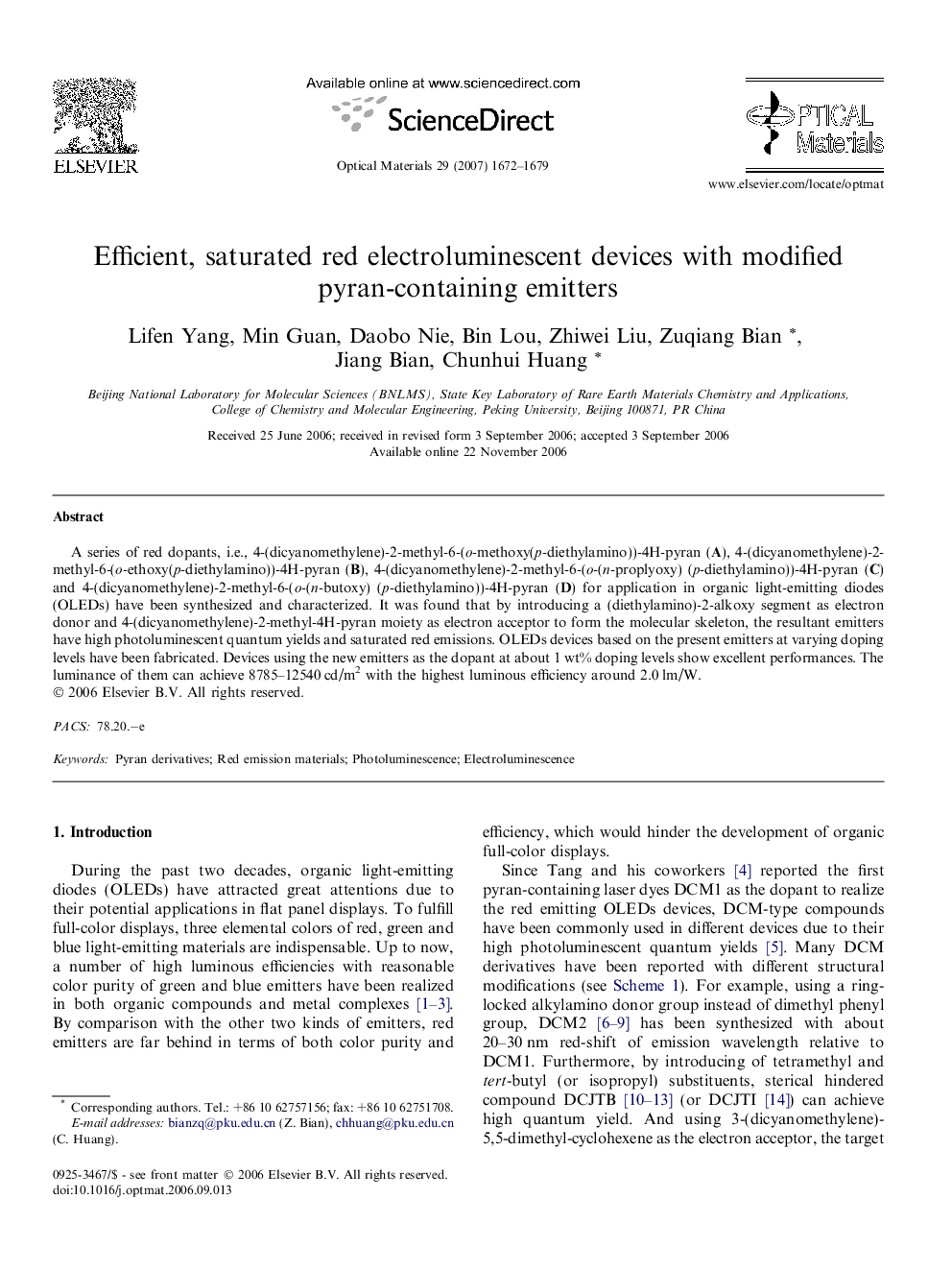| کد مقاله | کد نشریه | سال انتشار | مقاله انگلیسی | نسخه تمام متن |
|---|---|---|---|---|
| 1496829 | 992976 | 2007 | 8 صفحه PDF | دانلود رایگان |

A series of red dopants, i.e., 4-(dicyanomethylene)-2-methyl-6-(o-methoxy(p-diethylamino))-4H-pyran (A), 4-(dicyanomethylene)-2-methyl-6-(o-ethoxy(p-diethylamino))-4H-pyran (B), 4-(dicyanomethylene)-2-methyl-6-(o-(n-proplyoxy) (p-diethylamino))-4H-pyran (C) and 4-(dicyanomethylene)-2-methyl-6-(o-(n-butoxy) (p-diethylamino))-4H-pyran (D) for application in organic light-emitting diodes (OLEDs) have been synthesized and characterized. It was found that by introducing a (diethylamino)-2-alkoxy segment as electron donor and 4-(dicyanomethylene)-2-methyl-4H-pyran moiety as electron acceptor to form the molecular skeleton, the resultant emitters have high photoluminescent quantum yields and saturated red emissions. OLEDs devices based on the present emitters at varying doping levels have been fabricated. Devices using the new emitters as the dopant at about 1 wt% doping levels show excellent performances. The luminance of them can achieve 8785–12540 cd/m2 with the highest luminous efficiency around 2.0 lm/W.
Journal: Optical Materials - Volume 29, Issue 12, August 2007, Pages 1672–1679